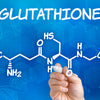How the plant pigment astaxanthin promotes eye health, and more

Researchers say that astaxanthin, a reddish-orange plant pigment (or carotenoid), may be among the most powerful antioxidants found in nature. Yet, many people have never heard of this remarkable substance.
A member of the xanthophyll family, astaxanthin is closely related to a pair of other “good-guy” pigments known as lutein and zeaxanthin. But while lutein and zeaxanthin are found in yellow and orange foods such as pumpkin, squash, corn, and egg yolks, astaxanthin is found mainly in bacteria, algae, and certain types of seafood, such as shrimp and salmon. (By the way, flamingos owe their brilliant pink coloration to the astaxanthin contained in the shrimp they consume).
So let’s see how astaxanthin, sometimes called the “king of carotenoids,” can promote health - including helping to protect precious vision.
Astaxanthin is a powerful neutralizer of harmful free radicals
Experts say that the key to astaxanthin’s health-promoting power is its ability to scavenge unstable free radicals. Also known as reactive oxygen species, free radicals are generated by a number of factors - including alcohol intake, smoking, exposure to environmental toxins, and infections - and can cause oxidative stress and damage that leads to unwanted inflammation.
Astaxanthin turns out to be a very effective foe of free radicals. In fact, researchers believe that astaxanthin is a stunning 550 times more effective as an antioxidant than vitamin E! Its antioxidant capabilities also out-power those of catechins, the beneficial compounds found in green tea. While lutein and zeaxanthin have recently received a lot of credit from scientists for their eye-protective abilities - and are included in the official AREDS formulation for eye health - astaxanthin has ten times higher antioxidant capacity than these potent carotenoids.
Research supports astaxanthin’s ability to promote eye health
In a 2020 review of studies published in Marine Drugs, the scientists reported that astaxanthin could reduce markers of oxidative stress, including malondialdehyde while increasing levels of helpful antioxidants such as superoxide dismutase. By helping to prevent the death of retinal pigment cells, astaxanthin helps to protect against exposure to ultraviolet light and “blue” light, which scientists say generate a large volume of reactive oxygen species.
The team added that astaxanthin could improve microbicidal capacity, strengthening the ability of the eye to fight off infections. The review authors reported that supplementation with a mixture of vitamins and carotenoids (including lutein, zeaxanthin, and 4 mg a day of astaxanthin) improved central retina function.
Wait, there’s more!
Astaxanthin is currently being investigated for a variety of purposes. While more research is needed, many scientists believe that it can support healthy blood pressure, help maintain healthy blood cholesterol and promote efficient circulation. In addition, some studies have supported astaxanthin’s ability to enhance athletic performance and endurance.
It may also benefit brain health and preserve cognitive function. (Animal studies have shown that astaxanthin increases the formation of new brain cells and enhances memory - never a bad thing!) Finally, topical use of astaxanthin may protect against ultraviolet-induced skin deterioration and help maintain healthy skin.
Ramp up dietary astaxanthin with seafood
Because our bodies don’t produce astaxanthin, we have to get it through diet or supplementation. Good dietary sources of astaxanthin include wild-caught sockeye salmon, krill, certain algae (such as chlorella), red trout, lobster, crabs, shrimp, crayfish, and salmon roe. Astaxanthin-rich seafood also contains beneficial omega-3 fatty acids, high-quality protein, and essential vitamins and minerals – so dining on seafood is a win/win for health. Incidentally, The American Heart Association recommends eating two servings a week of cold-water fatty fish for cardiovascular health.
Supplemental astaxanthin, derived from algae, is available in capsule form. Studies have used 4 mg to 8 milligrams per day, but check with your integrative doctor before supplementing. (Pro tip: if you choose to supplement, opt for natural astaxanthin derived from microalgae - not synthetic astaxanthin).
In the amounts recommended by the AHA, seafood is an excellent addition to your healthy diet – and contains vision-protective astaxanthin. What’s not to like?
Sources for this article include:
https://www.healthline.com/health/health-claims-astaxanthin
https://www.heart.org/en/healthy-living/healthy-eating/eat-smart/fats/fish-and-omega-3-fatty-acids






